Message in a Box: The Complete Recordings offers many sonic delights – the Police’s five studio albums are all solid, some of the greatest music to emerge from the New Wave – and many rarities – fifteen tracks unavailable elsewhere – but remains slightly less. For sheer bang-for-buck the twelve-song Every Breath You Take: The Classics remains the single-disc compilation to seek out, and the two-disc The Police offers up the best of the singles and album-only tracks. People looking for just the five Police albums could do worse than this set, and those fifteen extra songs are a nice enticement, but they’re wildly hit-and-miss.
“Fallout,” the Police’s first ever single, is a great slice of punk-era pop. The hard-hitting and driving musical force was barely hinted on their debut, Outlandos d’Amour. Songs like “Next to You” and “Born in the ‘50s” come close but don’t quite drive as quick and fast. It is a sheer delight. “Dead End Job” and “Nothing Achieving” keep the anarchic punk spirit alive. The cannibalistic tale of “Friends” is humorous, but quickly grows tired. “Shambelle” is pretty but weightless and overly long instrumental. “Flexible Strangers” is a better instrumental – not only is it punctuated by an angular guitar riff, but incorporates a hint of the world music and jazz flourishes that would come to prominence on Ghost in the Machine. These rarities are a thrill to hear as an avid Police fan, but they are slightly strange. Many of them aren’t punctuated by the mutant reggae that they brought to the spotlight. Instead, they are full-on New Wave rock, straight forward barn burners or jazzy, moody rockers.
I haven’t said much about their five proper albums (individual reviews are coming soon!), and that is because I wanted to focus exclusive on the material only available on this collection. Which is perfect for the rabid fan looking for an update from their older CDs, it’s a one-stop shop, but problematic for someone looking for just the best of the Police. I slightly wish I had just bought this boxset instead of hunting down all of the albums individually. Ah well, that’s what happens when you think that a boxset is out-of-print and you run into several copies at Best Buy. DOWNLOAD: “Fallout,” “Visions of the Night,” “I Burn for You,” “Dead End Job”
Message in a Box: The Complete Recordings
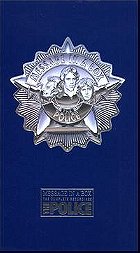 Posted : 15 years ago on 11 June 2010 03:51
(A review of Message in a Box)
Posted : 15 years ago on 11 June 2010 03:51
(A review of Message in a Box) 0 comments, Reply to this entry
0 comments, Reply to this entry
The Best of the Crystals
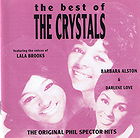 Posted : 15 years ago on 11 June 2010 03:51
(A review of The Best of the Crystals)
Posted : 15 years ago on 11 June 2010 03:51
(A review of The Best of the Crystals)Unlike Phillies label-mates the Ronettes, the Crystals possessed a more reflective, soulful, mature and introspective sound. When Ronnie Spector would sing a song about heartbreak you knew she could weather through it, that her salvation was only a night out and a dancefloor away. When Barbara Alston sang “No One Ever Tells You,” it was the sound of a girl experiencing heartbreak and possibly emotionally coming undone. That delicate nature continued with new lead singer Lala Brooks. While they weren’t falling into heartache, they were expressing a mature form of joy and elation. The only time they ever really sounded fiery was when Darlene Love and the Blossoms were forced by Spector to record and release a handful of singles as the Crystals. Yet each of there incarnations provided magical moments.
The Barbara Alston-lead version of the Crystals always sounded very soul/R&B-focused, even on an up-tempo number like “Uptown.” They specialized in melancholic, almost melodramatically sad, songs like “Look in My Eyes” and “Please Hurt Me.” But nothing will prepare you for the abusive relationship melodrama of “He Hit Me (And It Felt Like a Kiss),” written by Carole King after a member of the group said she stayed with her abusive boyfriend because she felt like he loved her the most when he hit her.
The next incarnation was the briefest, but left one of their longest lasting singles. Darlene Love and the Blossoms were recruited to record “He’s a Rebel” because Spector wanted to produce the song as quickly as possible before someone else (anyone else really) released it as a single. The Crystals were unavailable to record the song, they were in New York while Spector was in Los Angeles, and he asked Love and her backing group to record the song for him. He then released it under the Crystals name. It remains a high-spirited classic in the girl group genre with Love’s powerhouse vocals being unmatched for sheer veracious willpower. “He’s Sure the Boy I Love” came next, and one more single was to be recorded: “Da Doo Ron Ron.” Love wanted it to be released under her own name, Spector agreed but put off finalizing the contract. Love walked out, and the Crystals, with new lead singer Lala Brooks, were brought in to finish the song.
“Da Doo Ron Ron” ushered in the greatest of the three Crystals eras. After “Da Doo Ron Ron,” truly one of their greatest singles, came their greatest single: “Then He Kissed Me.” And every song after that was a soul-pop delight. Their version of “I Wonder” lacks the energy and dynamic nature of the Ronettes more well-known version. Lala Brooks’ girlish vocals rejuvenated the group and brought them back to Spector’s attention. They’ve always played second, or third, fiddle to the Ronettes and Darlene Love, but they could hold their own against those two powerhouses.
The Crystals have one of the most convoluted histories of any of the girl groups, but their material ranks amongst the best. Often underappreciated, if not out-right forgotten, and only really mentioned in conjunction with the Spector mythology, the Crystals deserve a second look. This collection is that second look. DOWNLOAD: “Then He Kissed Me,” “Da Doo Ron Ron,” “He Hit Me (And It Felt Like a Kiss)”
The Barbara Alston-lead version of the Crystals always sounded very soul/R&B-focused, even on an up-tempo number like “Uptown.” They specialized in melancholic, almost melodramatically sad, songs like “Look in My Eyes” and “Please Hurt Me.” But nothing will prepare you for the abusive relationship melodrama of “He Hit Me (And It Felt Like a Kiss),” written by Carole King after a member of the group said she stayed with her abusive boyfriend because she felt like he loved her the most when he hit her.
The next incarnation was the briefest, but left one of their longest lasting singles. Darlene Love and the Blossoms were recruited to record “He’s a Rebel” because Spector wanted to produce the song as quickly as possible before someone else (anyone else really) released it as a single. The Crystals were unavailable to record the song, they were in New York while Spector was in Los Angeles, and he asked Love and her backing group to record the song for him. He then released it under the Crystals name. It remains a high-spirited classic in the girl group genre with Love’s powerhouse vocals being unmatched for sheer veracious willpower. “He’s Sure the Boy I Love” came next, and one more single was to be recorded: “Da Doo Ron Ron.” Love wanted it to be released under her own name, Spector agreed but put off finalizing the contract. Love walked out, and the Crystals, with new lead singer Lala Brooks, were brought in to finish the song.
“Da Doo Ron Ron” ushered in the greatest of the three Crystals eras. After “Da Doo Ron Ron,” truly one of their greatest singles, came their greatest single: “Then He Kissed Me.” And every song after that was a soul-pop delight. Their version of “I Wonder” lacks the energy and dynamic nature of the Ronettes more well-known version. Lala Brooks’ girlish vocals rejuvenated the group and brought them back to Spector’s attention. They’ve always played second, or third, fiddle to the Ronettes and Darlene Love, but they could hold their own against those two powerhouses.
The Crystals have one of the most convoluted histories of any of the girl groups, but their material ranks amongst the best. Often underappreciated, if not out-right forgotten, and only really mentioned in conjunction with the Spector mythology, the Crystals deserve a second look. This collection is that second look. DOWNLOAD: “Then He Kissed Me,” “Da Doo Ron Ron,” “He Hit Me (And It Felt Like a Kiss)”
 0 comments, Reply to this entry
0 comments, Reply to this entry
The Marble Index
 Posted : 15 years ago on 11 June 2010 03:50
(A review of The Marble Index)
Posted : 15 years ago on 11 June 2010 03:50
(A review of The Marble Index)It is telling that a documentary about Nico was dubbed Nico Icon. Not only is it the easiest anagram to make, but it succinctly describes her career and presence. Never really a chart-topper, or large presence in any list of the greatest outside of her work with the Velvet Underground, Nico still found a way to influence an entire generation with her stark, minimalist avant-garde chamber-pop.
The Marble Index is the album that Nico intended Chelsea Girls to be: the absence of studio tinkering, the baroque compositions and her haunting, disturbing vocals engulf you in her depression. This kind of droning art-rock is not for everyone, but from its pitch-black head sprung the gothic music genre. “Facing the Wind” and “Frozen Warnings” sound similar to what Siouxsie and the Banshees or the Cure have spent their entire careers cooking up. Once more, a case of low-sales/huge-influence/underground-icon, a phenomenon that I have to come realize means the most to me. DOWNLOAD: “Frozen Warnings”
The Marble Index is the album that Nico intended Chelsea Girls to be: the absence of studio tinkering, the baroque compositions and her haunting, disturbing vocals engulf you in her depression. This kind of droning art-rock is not for everyone, but from its pitch-black head sprung the gothic music genre. “Facing the Wind” and “Frozen Warnings” sound similar to what Siouxsie and the Banshees or the Cure have spent their entire careers cooking up. Once more, a case of low-sales/huge-influence/underground-icon, a phenomenon that I have to come realize means the most to me. DOWNLOAD: “Frozen Warnings”
 0 comments, Reply to this entry
0 comments, Reply to this entry
Anthology: The Best of Marvin Gaye
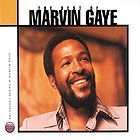 Posted : 15 years, 1 month ago on 24 May 2010 08:56
(A review of The Best of Marvin Gaye (Motown Anthology Series))
Posted : 15 years, 1 month ago on 24 May 2010 08:56
(A review of The Best of Marvin Gaye (Motown Anthology Series))Forty-seven songs, two-discs and the only thing missing is “Sexual Healing,” which couldn’t be included because it wasn’t a Motown release. A historic and varied career like Marvin Gaye’s would seem difficult to condense to two-disc’s worth of material, but the compilers somehow did it. And thank god that they did. This is a feast for any music fan. Especially if they’re looking for a collection of sophisticated, intelligent soul-pop confections.
Each disc smartly and economically summarizes the two distinct phases of Gaye’s career: the early years in which he was a matinee idol and the later years in which he took artistic control and crafted socially conscious, spiritually aware and sexually provocative material. His first single, “Stubborn Kind of Fellow,” is smartly named if the stories of his obsessive need for perfection and control-freak studio tantrums are to be believed. (And they probably should be. No great artist is without their own set of ‘quirks.’) It’s a gloriously upbeat, danceable piece of soul-pop fluff. The kind that Motown was infamous for turning out at a regular basis, but just because it is fluffy doesn’t mean it doesn’t have its own artistic merits or cultural worth. Just because no one song on the first disc is as socially conscious as “What’s Going On” doesn’t mean that they’re any less vital, alive, pleasurable. The first disc is an amazing run through some of the most influential soul-pop music of the 20th century. Numerous duets with Tammi Terrell and Kim Weston appear, about six total, which is to be expected. The dynamic back-and-forth in songs like “Ain’t No Mountain High Enough” and “It Takes Two” are magically charged moments. But the real highlight on the first disc is the minimalist, dark groove of “I Heard It Through the Grapevine,” which snakes along slowly and stealthily before bursting out into the chorus.
The second disc picks up with 1971’s What’s Going On and ends with 1981’s “Heavy Love Affair.” This second disc covers his concept album phase which went on to become his most influential period. So much so that What’s Going On ranked at No. 6 on Rolling Stone’s 500 Greatest Albums of All-Time. (The other two albums chosen for the list were Let’s Get It On and Here, My Dear, two other concept albums.) This period shows a surprising amount of range, not only in subject matter but in soundscapes. There’s the space-age funk of “When Did You Stop Loving Me, When Did I Stop Loving You,” the sexually provocative “Let’s Get It On,” the disco-funk of “I Want You” and spiritually-centered soft soul-pop of “God Is Love.” Each is a magnificent song, expertly crafted and performed. But nothing tops the still-relevant “What’s Going On” for sheer artistic might and influence.
These forty-seven songs prove why Marvin Gaye was listed at No. 18 on Rolling Stone’s The Immortals list. These forty-seven songs prove what a huge wake Gaye left before his untimely death; the reverberations of these recordings are still being felt. Without Gaye imagine what the R&B, soul and pop landscapes would be like. It would be a sad and plain world. DOWNLOAD: “What’s Going On,” “I Heard It Through the Grapevine,” “Can I Get a Witness,” “I Want You”
Each disc smartly and economically summarizes the two distinct phases of Gaye’s career: the early years in which he was a matinee idol and the later years in which he took artistic control and crafted socially conscious, spiritually aware and sexually provocative material. His first single, “Stubborn Kind of Fellow,” is smartly named if the stories of his obsessive need for perfection and control-freak studio tantrums are to be believed. (And they probably should be. No great artist is without their own set of ‘quirks.’) It’s a gloriously upbeat, danceable piece of soul-pop fluff. The kind that Motown was infamous for turning out at a regular basis, but just because it is fluffy doesn’t mean it doesn’t have its own artistic merits or cultural worth. Just because no one song on the first disc is as socially conscious as “What’s Going On” doesn’t mean that they’re any less vital, alive, pleasurable. The first disc is an amazing run through some of the most influential soul-pop music of the 20th century. Numerous duets with Tammi Terrell and Kim Weston appear, about six total, which is to be expected. The dynamic back-and-forth in songs like “Ain’t No Mountain High Enough” and “It Takes Two” are magically charged moments. But the real highlight on the first disc is the minimalist, dark groove of “I Heard It Through the Grapevine,” which snakes along slowly and stealthily before bursting out into the chorus.
The second disc picks up with 1971’s What’s Going On and ends with 1981’s “Heavy Love Affair.” This second disc covers his concept album phase which went on to become his most influential period. So much so that What’s Going On ranked at No. 6 on Rolling Stone’s 500 Greatest Albums of All-Time. (The other two albums chosen for the list were Let’s Get It On and Here, My Dear, two other concept albums.) This period shows a surprising amount of range, not only in subject matter but in soundscapes. There’s the space-age funk of “When Did You Stop Loving Me, When Did I Stop Loving You,” the sexually provocative “Let’s Get It On,” the disco-funk of “I Want You” and spiritually-centered soft soul-pop of “God Is Love.” Each is a magnificent song, expertly crafted and performed. But nothing tops the still-relevant “What’s Going On” for sheer artistic might and influence.
These forty-seven songs prove why Marvin Gaye was listed at No. 18 on Rolling Stone’s The Immortals list. These forty-seven songs prove what a huge wake Gaye left before his untimely death; the reverberations of these recordings are still being felt. Without Gaye imagine what the R&B, soul and pop landscapes would be like. It would be a sad and plain world. DOWNLOAD: “What’s Going On,” “I Heard It Through the Grapevine,” “Can I Get a Witness,” “I Want You”
 0 comments, Reply to this entry
0 comments, Reply to this entry
Dance Craze
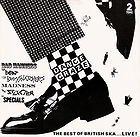 Posted : 15 years, 1 month ago on 24 May 2010 08:56
(A review of Dance Craze - The Best of British Ska... Live!)
Posted : 15 years, 1 month ago on 24 May 2010 08:56
(A review of Dance Craze - The Best of British Ska... Live!)A live soundtrack to the film of the same name, Dance Craze is a love poem to a bygone era that proved more durable and lasting than anyone would have predicted. The Specials, Madness and the (English) Beat went on to become genre defining musical icons, and second-tier label mates the Selecter, Bad Manners and the Bodysnatchers prove that they had just as much muscle behind their punk-fueled reggae grooves.
The vicious attack of “Three Minute Hero” is an especially tasty treat. With the British ska being an exclusive boys club, Pauline Black tears into her vocals with just as much cocksure braggadocio as any of the boys in Madness or the Specials. Her vocal style and delivery was an obvious inspiration to third-generation female ska vocalists like Monique Powell and Gwen Stefani. The same thing goes for the all-female band the Bodysnatchers. Rhoda Dakar’s vocal style can be heard in Gwen Stefani, but their live performance just doesn’t carry the same weight as the Selecter’s, or any of the other bands. It’s not bad, not by any means, but they’ve been out muscled.
But for sheer mighty influence look no further than the polished mutant reggae grooves of the (English) Beat and the politically-minded angry party boys of the Specials. “Mirror in the Bathroom” occupies a space in both the ska and New Wave classic’s songbook. Their best live take is “Big Shot,” with the band firing away on all cylinders and giving their normally polished sound just the slightest bit of edge and fury. Every track by the Specials is a highlight. This was a band that was known for its raucous live shows back in the day. Their first two albums together contained a great deal of manic energy, but, as the legend goes, still paled in comparison to their live shows. This might just prove that storyline correct. “Concrete Jungle” is the kind of song that the dance craze, the skank, was created for. And the take of “Nite Klub” starts slow and jazzy before building up and exploding into a ska-crazed frontal assault. But Madness’ the-amp-goes-to-eleven take on “One Step Beyond” has the audience cheering their name afterwards. Maybe you will too.
Dance Craze is the kind of album that makes me wish I was a teenager in the late 70s/early 80s. At the American shows I would have been one of those people chanting out the names of the bands. I would have worn the Pork pie hat, I would have done the skank, and I would have dressed ruder than you. This is an absolute essential documentation of the Two-Tone ska era. An era whose influence is still being felt in the alternative music of today through the modern influence of bands like Sublime, No Doubt and Rancid. DOWNLOAD: The Specials’ “Nite Klub,” Madness’ “One Step Beyond,” The Selecter’s “Three Minute Hero”
The vicious attack of “Three Minute Hero” is an especially tasty treat. With the British ska being an exclusive boys club, Pauline Black tears into her vocals with just as much cocksure braggadocio as any of the boys in Madness or the Specials. Her vocal style and delivery was an obvious inspiration to third-generation female ska vocalists like Monique Powell and Gwen Stefani. The same thing goes for the all-female band the Bodysnatchers. Rhoda Dakar’s vocal style can be heard in Gwen Stefani, but their live performance just doesn’t carry the same weight as the Selecter’s, or any of the other bands. It’s not bad, not by any means, but they’ve been out muscled.
But for sheer mighty influence look no further than the polished mutant reggae grooves of the (English) Beat and the politically-minded angry party boys of the Specials. “Mirror in the Bathroom” occupies a space in both the ska and New Wave classic’s songbook. Their best live take is “Big Shot,” with the band firing away on all cylinders and giving their normally polished sound just the slightest bit of edge and fury. Every track by the Specials is a highlight. This was a band that was known for its raucous live shows back in the day. Their first two albums together contained a great deal of manic energy, but, as the legend goes, still paled in comparison to their live shows. This might just prove that storyline correct. “Concrete Jungle” is the kind of song that the dance craze, the skank, was created for. And the take of “Nite Klub” starts slow and jazzy before building up and exploding into a ska-crazed frontal assault. But Madness’ the-amp-goes-to-eleven take on “One Step Beyond” has the audience cheering their name afterwards. Maybe you will too.
Dance Craze is the kind of album that makes me wish I was a teenager in the late 70s/early 80s. At the American shows I would have been one of those people chanting out the names of the bands. I would have worn the Pork pie hat, I would have done the skank, and I would have dressed ruder than you. This is an absolute essential documentation of the Two-Tone ska era. An era whose influence is still being felt in the alternative music of today through the modern influence of bands like Sublime, No Doubt and Rancid. DOWNLOAD: The Specials’ “Nite Klub,” Madness’ “One Step Beyond,” The Selecter’s “Three Minute Hero”
 0 comments, Reply to this entry
0 comments, Reply to this entry
Belle de Jour
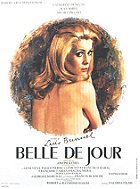 Posted : 15 years, 1 month ago on 24 May 2010 08:51
(A review of Belle de Jour)
Posted : 15 years, 1 month ago on 24 May 2010 08:51
(A review of Belle de Jour)The performance that Catharine Deneuve gives in Belle de Jour is the kind of performance that makes you love film and appreciate the art of acting. As a bored housewife who engages in high-class prostitution, who may or may not have an extreme interest in BDSM, Deneuve makes like the greatest of the Hitchcock blondes without actually having been one.
Deneuve’s unknowable, unreadable face is a porcelain thing of immaculate beauty. Despite the film being told strictly from her point-of-view, we know very little about her. Perhaps she knows little about herself, perhaps she is concerned with projecting the artifice and ashamed of her surreal, blackly comic fantasy world. She has a husband, but he exists on the periphery. He cannot, and does not, know about her elaborate constructs, so she has no use for him besides social propriety. What do the constant cat’s meows mean? Am I supposed to have a gut reaction each time a carriage bells begins to ring? I have no real theory about the cat’s meow, but the carriage bells always made my gut churn with the prominent fear that something bad was about to happen, some strange fantasy was about to unfold which would confuse and confound me. This is a film about eroticism that knows much of erotica comes from the imagination, not the physical acts, which can be fun but are generally messy affairs.
There is much to admire about Bunuel’s film, but the thing that struck me the deepest in my viewing experience was the performance at the heart of the film. Or, as Premiere magazine put in their [Link removed - login to see] introduction: “We love great movies for everything they've got going for them…we feel the most electric connection to them—when the actors look out from that big screen and hook into us. They make us believe that they're the people they're playing….” Truer words have never been spoken. (Belle de Jour made the list at number 59.)
Deneuve’s unknowable, unreadable face is a porcelain thing of immaculate beauty. Despite the film being told strictly from her point-of-view, we know very little about her. Perhaps she knows little about herself, perhaps she is concerned with projecting the artifice and ashamed of her surreal, blackly comic fantasy world. She has a husband, but he exists on the periphery. He cannot, and does not, know about her elaborate constructs, so she has no use for him besides social propriety. What do the constant cat’s meows mean? Am I supposed to have a gut reaction each time a carriage bells begins to ring? I have no real theory about the cat’s meow, but the carriage bells always made my gut churn with the prominent fear that something bad was about to happen, some strange fantasy was about to unfold which would confuse and confound me. This is a film about eroticism that knows much of erotica comes from the imagination, not the physical acts, which can be fun but are generally messy affairs.
There is much to admire about Bunuel’s film, but the thing that struck me the deepest in my viewing experience was the performance at the heart of the film. Or, as Premiere magazine put in their [Link removed - login to see] introduction: “We love great movies for everything they've got going for them…we feel the most electric connection to them—when the actors look out from that big screen and hook into us. They make us believe that they're the people they're playing….” Truer words have never been spoken. (Belle de Jour made the list at number 59.)
 0 comments, Reply to this entry
0 comments, Reply to this entry
The First Wives Club
 Posted : 15 years, 1 month ago on 24 May 2010 08:50
(A review of The First Wives Club)
Posted : 15 years, 1 month ago on 24 May 2010 08:50
(A review of The First Wives Club)The First Wives Club is not a great film, but it is a great piece of cinematic junk food. There’s nothing wrong with something a little too fatty or too sugary for you every so often. The First Wives Club has numerous actors and actresses that I admire involved, all of whom seem to be having a good time, and it is hard to begrudge them a little fun. Among the three major stars they have earned two Academy Awards out of eight nominations, not to mention the Emmy, Grammy and Tony awards they have either been nominated for or won. Why not just sit back and enjoy them being silly for an hour and a half?
The film throws together enough of a loose plot to string together a madcap, zany might be the better word for it, series of adventures for our three heroines to engage in. With each wife being left for a younger model by their dubious husbands, there is some fertile ground for comedy to be plowed. And plow it they do, taking hilariously bitter jabs at plastic surgery, ageism, sexism and the first wife syndrome. (A series of jokes about a daughter’s lesbianism strike an ugly chord. Being gay shouldn’t be a punchline used against your father, even if he did leave your mother for the psychiatrist.)
But Keaton, Midler, and especially Hawn, bite into their roles with relish. Each actress is allowed to poke fun at their public or filmic images. Keaton gets to play a variation on Annie Hall, just try to imagine what would happen if that character got married, had a kid and relocated to the suburbs. Now imagine that character in couple’s counseling and being left for the therapist. Midler gets to do her outsized, brash persona in the form of a Queens housewife. It works, and she even gets to sing and dance for a spell. But the best of the three is Hawn as a boozing, plastic surgery addicted former Academy Award winner whose career has spiraled downward into making schlocky sex obsessed “Skinemax” films. Her statement that Hollywood has three parts for women is incredibly apt. (For the record they include: babe, district attorney, Driving Miss Daisy.)
Could a better movie have been made out of this subject matter? Oh yes, and especially given the cast a great one could have resulted. A modern day The Women in a sense, but instead we have a movie that is great for Saturday afternoon entertainment. Say, you’re stuck at home on a Saturday afternoon and you feel like watching something fluffy, entertaining and harmless. The First Wives Club is perfect for that.
The film throws together enough of a loose plot to string together a madcap, zany might be the better word for it, series of adventures for our three heroines to engage in. With each wife being left for a younger model by their dubious husbands, there is some fertile ground for comedy to be plowed. And plow it they do, taking hilariously bitter jabs at plastic surgery, ageism, sexism and the first wife syndrome. (A series of jokes about a daughter’s lesbianism strike an ugly chord. Being gay shouldn’t be a punchline used against your father, even if he did leave your mother for the psychiatrist.)
But Keaton, Midler, and especially Hawn, bite into their roles with relish. Each actress is allowed to poke fun at their public or filmic images. Keaton gets to play a variation on Annie Hall, just try to imagine what would happen if that character got married, had a kid and relocated to the suburbs. Now imagine that character in couple’s counseling and being left for the therapist. Midler gets to do her outsized, brash persona in the form of a Queens housewife. It works, and she even gets to sing and dance for a spell. But the best of the three is Hawn as a boozing, plastic surgery addicted former Academy Award winner whose career has spiraled downward into making schlocky sex obsessed “Skinemax” films. Her statement that Hollywood has three parts for women is incredibly apt. (For the record they include: babe, district attorney, Driving Miss Daisy.)
Could a better movie have been made out of this subject matter? Oh yes, and especially given the cast a great one could have resulted. A modern day The Women in a sense, but instead we have a movie that is great for Saturday afternoon entertainment. Say, you’re stuck at home on a Saturday afternoon and you feel like watching something fluffy, entertaining and harmless. The First Wives Club is perfect for that.
 0 comments, Reply to this entry
0 comments, Reply to this entry
The Man Who Sold the World
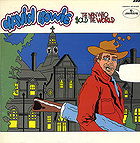 Posted : 15 years, 1 month ago on 8 May 2010 05:14
(A review of The Man Who Sold the World)
Posted : 15 years, 1 month ago on 8 May 2010 05:14
(A review of The Man Who Sold the World)With his self-titled debut, David Bowie was going for a singer-songwriter vibe, albeit one with a slightly strange, fairy dust quality. He was smart enough to dismiss that idea and embrace his inner weirdo with The Man Who Sold the World, a heavy album that really made the Velvet Underground and Stooges influences prevalent.
The loud guitars, smart wordplay and gender-fuck cover set the stage for Hunky Dory to really explode the Bowie mythology across the musical landscape. As such, this is the first Bowie album to be of interest, and it is a great one. Not quite as perfect as Ziggy Stardust or Low, but roughly as good as Aladdin Sane or The Best of. On "After All" Bowie had the genius idea of taking the Stooges’ “We Will Fall” and crafting a real song onto it. The heaviness of “The Width of a Circle” expands the heaviness of Funhouse or White Light/White Heat to the glam-rock lexicon. Brilliant. And try as they might, Nirvana’s beautiful, bruised acoustic cover of the title song isn’t quite as great as the Latin-flavored loud acoustic rock (oxymoronic, I know) of Bowie’s original.
The Man Who Sold the World is where the real Bowie story begins, and it could make for a unique place to start the exploration of his catalogue. This wouldn’t be the last time he’d turn the guitars up so loudly, but this was the first. And while the Bowie-in-a-dress cover might seem obviously shocking, it was but a small hint of the weird and androgynous places he would go. This is but a tip of Bowie’s greatness and musical genius. DOWNLOAD: “The Man Who Sold the World”
The loud guitars, smart wordplay and gender-fuck cover set the stage for Hunky Dory to really explode the Bowie mythology across the musical landscape. As such, this is the first Bowie album to be of interest, and it is a great one. Not quite as perfect as Ziggy Stardust or Low, but roughly as good as Aladdin Sane or The Best of. On "After All" Bowie had the genius idea of taking the Stooges’ “We Will Fall” and crafting a real song onto it. The heaviness of “The Width of a Circle” expands the heaviness of Funhouse or White Light/White Heat to the glam-rock lexicon. Brilliant. And try as they might, Nirvana’s beautiful, bruised acoustic cover of the title song isn’t quite as great as the Latin-flavored loud acoustic rock (oxymoronic, I know) of Bowie’s original.
The Man Who Sold the World is where the real Bowie story begins, and it could make for a unique place to start the exploration of his catalogue. This wouldn’t be the last time he’d turn the guitars up so loudly, but this was the first. And while the Bowie-in-a-dress cover might seem obviously shocking, it was but a small hint of the weird and androgynous places he would go. This is but a tip of Bowie’s greatness and musical genius. DOWNLOAD: “The Man Who Sold the World”
 0 comments, Reply to this entry
0 comments, Reply to this entry
Head First
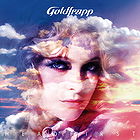 Posted : 15 years, 1 month ago on 8 May 2010 05:14
(A review of Head First)
Posted : 15 years, 1 month ago on 8 May 2010 05:14
(A review of Head First)Goldfrapp has always been a band that understood a dying art: the art of the album cover as a cohesive image for the audio strains. Felt Mountain was a sepia toned reflected image of Alison Goldfrapp as a Weimar chanteuse, Black Cherry was a collage of Alison as wolf-lady circus act, Supernature was a dark glam-rock vixen enticing you to come with her behind the curtain. And now comes Head First which has a beautiful, vibrant cover image of Alison Goldfrapp amongst the clouds. The warm blues and pinks make sense given the shiny, warm and vibrant synth-pop that is inside. It might be the ‘least’ of Goldfrapp’s discography, but it’s still solid from front to back.
Having obviously brushed up on Xanadu-era Olivia Newton John, early Depeche Mode, Yaz, Erasure and the happier Eurythmics singles, Head First could have easily come out in 1984. Lead single “Rocket” makes that cover of “Physical” seem not only less ironic, but like it was always going to happen. It’s the kind of song with such a huge chorus that it’ll get stuck in your head for days. And the way she coos “I’ve got a rocket/You’re going on it” sounds both like a sexual challenge and a kiss off. Then there’s the next song, “Believer,” which creates some of Blondie’s “Dreaming” and adds a lot of Erasure-sized disco-pop. It’s a piece of fluffy synth-fueled candy that sounds right out of the original New Wave. “Shiny and Warm” adds a dash of David Bowie’s “Hang On to Yourself” glam-rock to the gloriously strange pop heights Goldfrapp can reach on any song. And “Voicething” returns us to Goldfrapp’s biggest inspiration, the ethereal fairy acid-queen, Kate Bush. Without any real lyrics to speak of, Alison Goldfrapp unleashes the operatic voice within her, challenging Will Gregory to match the impossibly high notes that she can hit with his army of synthesizers and programming.
These are the highlights, and while the rest of the album is by no means slumming it, it all does get a little same-y after a while. It’s all a Hi-NRG workout, but a welcome change of pace from the English duo. With every album being a new left or right turn into some weirder territory, never once repeating themselves, Goldfrapp feel like the latest welcome addition to the heirs of the pop thrones held by Madonna and Debbie Harry. Goldfrapp has always been a mix of Kate Bush and Debbie Harry’s ironic, artsy-weirdo disco vamp. They have created five solid albums. Why aren’t they bigger here in the U.S.? DOWNLOAD: “Rocket”
Having obviously brushed up on Xanadu-era Olivia Newton John, early Depeche Mode, Yaz, Erasure and the happier Eurythmics singles, Head First could have easily come out in 1984. Lead single “Rocket” makes that cover of “Physical” seem not only less ironic, but like it was always going to happen. It’s the kind of song with such a huge chorus that it’ll get stuck in your head for days. And the way she coos “I’ve got a rocket/You’re going on it” sounds both like a sexual challenge and a kiss off. Then there’s the next song, “Believer,” which creates some of Blondie’s “Dreaming” and adds a lot of Erasure-sized disco-pop. It’s a piece of fluffy synth-fueled candy that sounds right out of the original New Wave. “Shiny and Warm” adds a dash of David Bowie’s “Hang On to Yourself” glam-rock to the gloriously strange pop heights Goldfrapp can reach on any song. And “Voicething” returns us to Goldfrapp’s biggest inspiration, the ethereal fairy acid-queen, Kate Bush. Without any real lyrics to speak of, Alison Goldfrapp unleashes the operatic voice within her, challenging Will Gregory to match the impossibly high notes that she can hit with his army of synthesizers and programming.
These are the highlights, and while the rest of the album is by no means slumming it, it all does get a little same-y after a while. It’s all a Hi-NRG workout, but a welcome change of pace from the English duo. With every album being a new left or right turn into some weirder territory, never once repeating themselves, Goldfrapp feel like the latest welcome addition to the heirs of the pop thrones held by Madonna and Debbie Harry. Goldfrapp has always been a mix of Kate Bush and Debbie Harry’s ironic, artsy-weirdo disco vamp. They have created five solid albums. Why aren’t they bigger here in the U.S.? DOWNLOAD: “Rocket”
 0 comments, Reply to this entry
0 comments, Reply to this entry
40 Greatest Hits
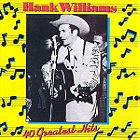 Posted : 15 years, 1 month ago on 5 May 2010 07:16
(A review of 40 Greatest Hits)
Posted : 15 years, 1 month ago on 5 May 2010 07:16
(A review of 40 Greatest Hits)Hank Williams specialized in a certain kind of music: no bullshit. He set the template for the kind of hardened, sarcastic, deeply spiritual and secretly emotional iconography that was picked up by numerous performers: Johnny Cash, Ray Charles, Merle Haggard, Beck and X are just a small fracture of the artists that owe him a huge debt. His music wasn’t just honky tonk country, it breathed with a folksy, purely American warmth that also incorporated elements of gospel, pop and a early, primitive variation of rock & roll that would explode with the Sun Records lineup. 40 Greatest Hits doesn’t come close to showcasing everything he recorded, The Complete Recordings does, but this collection does showcase his genius in every facet. Forty songs sounds like an exhaustive number, but it’s an absolute perfection. This is the kind of compilation that I keep speaking of: very facet of Williams’ genius is on display, every invention, every well-known (and often covered) song and lesser known, but no less great, songs are also included. It is presented in chronological order and shows a growth in artistic ability and musical importance.
Hank Williams was blessed with a songwriting gift and knack for musical invention that comes along so rarely, that anyone would be envious for any of his well-known songs. “I’m So Lonesome I Could Cry,” “Cold, Cold Heart,” “Hey, Good Lookin’,” “Jambalaya (On the Bayou)” – these are timeless, and often covered, songs which would be good enough evidence to cement William’s stature and reputation, but they’re just the beginning of the story. “Your Cheatin’ Heart” is another one of those songs, and it’s my favorite from him, but only just so. “Ramblin’ Man,” a song which brought country music into the modern era, is a character song, like several other country songs it discloses the story of a less than reputable man and his lifestyle, is a strong contender for his best song. The gospel-tinged “I Saw the Light,” which closes out the two-disc set, is a musical revelation. Williams sounds like he’s made peace with the (self) destructive journey he chronicled in “Lost Highway” and is expressing his spirituality while his soul is in the ether. And his rollicking, smartass humor in “Move It on Over” was obviously a point inspiration for Johnny Cash in songs like “Dirty Old Egg Sucking Dog” and “Flushed from the Bathroom of Your Heart.” The honky-tonk guitar and piano throughout obviously helped to give rise to rockabilly.
Hank Williams is quite possibly the first great musical artist of the modern era to have died at an early age. He was only twenty-nine. (Robert Johnson is another contender for that distinction.) What he managed to accomplish in, roughly, less than a decade sent a subtle shockwave through modern music that culminated in a huge tidal wave of influence. The Sun Records big-bang of rock & roll owed him a huge debt, Bob Dylan named “Like a Rolling Stone” after one of his lyrics and Beck has been taking his lesson in honky-tonk country and mixing them in with modern electronics and hip-hop throughout his entire career. Is this essential listening? Oh, yes. This is also essential music to own. 40 Greatest Hits is absolute perfection. DOWNLOAD: “Your Cheatin’ Heart,” “Ramblin’ Man,” “I Saw the Light,” “Move It on Over”
Hank Williams was blessed with a songwriting gift and knack for musical invention that comes along so rarely, that anyone would be envious for any of his well-known songs. “I’m So Lonesome I Could Cry,” “Cold, Cold Heart,” “Hey, Good Lookin’,” “Jambalaya (On the Bayou)” – these are timeless, and often covered, songs which would be good enough evidence to cement William’s stature and reputation, but they’re just the beginning of the story. “Your Cheatin’ Heart” is another one of those songs, and it’s my favorite from him, but only just so. “Ramblin’ Man,” a song which brought country music into the modern era, is a character song, like several other country songs it discloses the story of a less than reputable man and his lifestyle, is a strong contender for his best song. The gospel-tinged “I Saw the Light,” which closes out the two-disc set, is a musical revelation. Williams sounds like he’s made peace with the (self) destructive journey he chronicled in “Lost Highway” and is expressing his spirituality while his soul is in the ether. And his rollicking, smartass humor in “Move It on Over” was obviously a point inspiration for Johnny Cash in songs like “Dirty Old Egg Sucking Dog” and “Flushed from the Bathroom of Your Heart.” The honky-tonk guitar and piano throughout obviously helped to give rise to rockabilly.
Hank Williams is quite possibly the first great musical artist of the modern era to have died at an early age. He was only twenty-nine. (Robert Johnson is another contender for that distinction.) What he managed to accomplish in, roughly, less than a decade sent a subtle shockwave through modern music that culminated in a huge tidal wave of influence. The Sun Records big-bang of rock & roll owed him a huge debt, Bob Dylan named “Like a Rolling Stone” after one of his lyrics and Beck has been taking his lesson in honky-tonk country and mixing them in with modern electronics and hip-hop throughout his entire career. Is this essential listening? Oh, yes. This is also essential music to own. 40 Greatest Hits is absolute perfection. DOWNLOAD: “Your Cheatin’ Heart,” “Ramblin’ Man,” “I Saw the Light,” “Move It on Over”
 0 comments, Reply to this entry
0 comments, Reply to this entry
 Login
Login
 Home
Home 95 Lists
95 Lists 1531 Reviews
1531 Reviews Collections
Collections